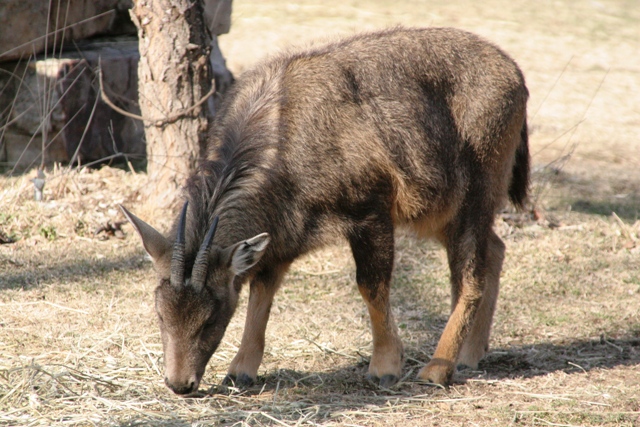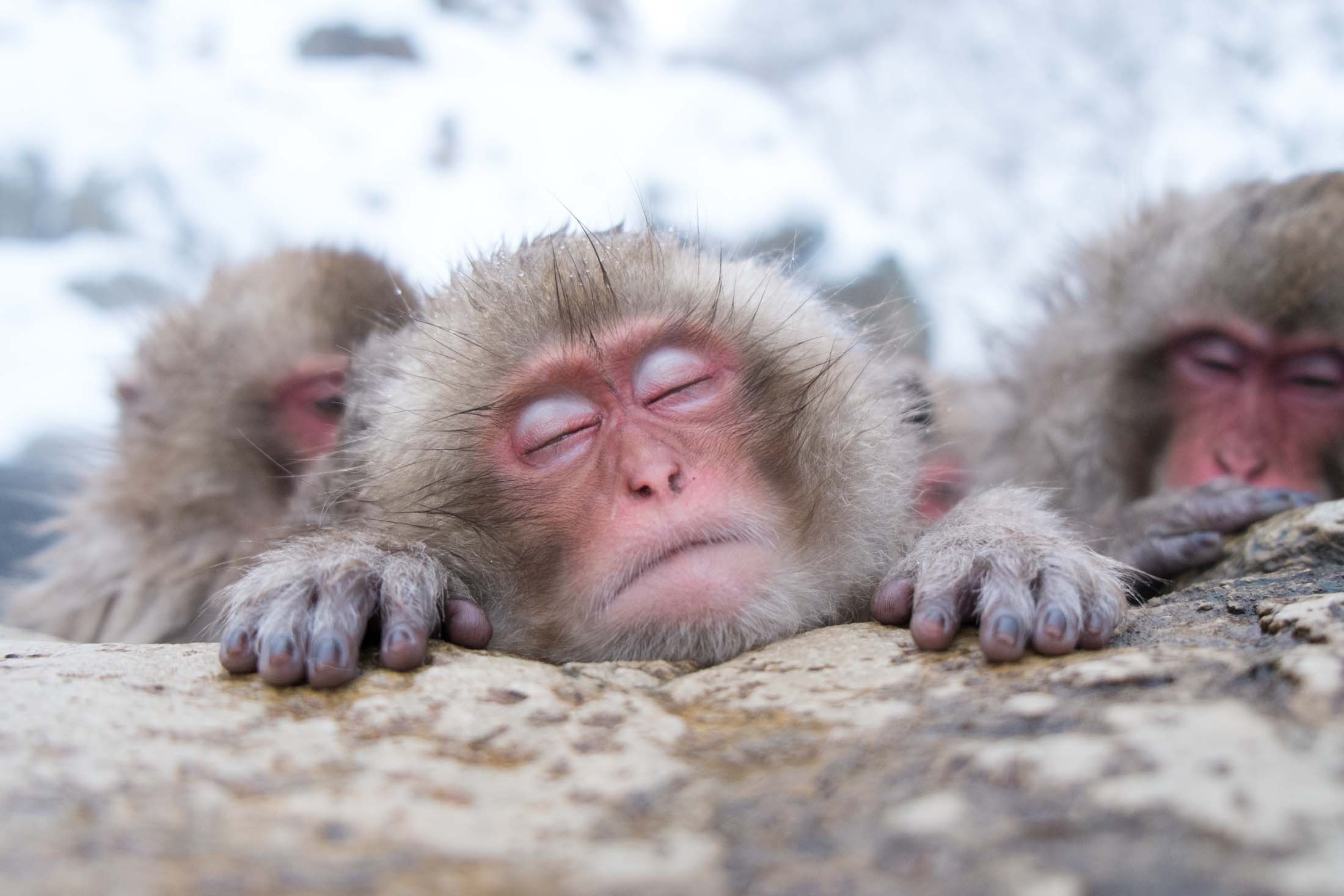|
Shiga Kōgen
is a ski resort and hiking spot, located in the Jōshin'etsu-kōgen National Park in the highlands of Yamanouchi, Nagano, Japan. In 1980, an area of was designated a UNESCO Man and the Biosphere Reserve. Ski resort At 4.25 square kilometres (1.64 sq mi), Shiga-kōgen is arguably the largest ski resort in Japan, as well as the second highest in elevation. The resort is made up of 21 smaller, interconnected ski fields, with 70 lifts in total. Starting in winter 2015-16 all of Shiga-kōgen became open to skiers and snowboarders (previously some areas were restricted to skiers only). The resort was the site of several events in the 1998 Nagano Olympics. There are more than 100 hotels in the area, with Japanese style or washitsu (和室), Western style or semi-Japanese style rooms. Ski season Shiga-kōgen has one of the longest ski seasons in Japan, with the official ski season commencing from mid-to-late November and continuing throughout April and until Golden Week, the first ... [...More Info...] [...Related Items...] OR: [Wikipedia] [Google] [Baidu] |
Japanese Serow
The : (''Capricornis crispus'') ( 羚羊) is a Japanese goat-antelope, an even-toed ungulate mammal. It is found in dense woodland in Japan, primarily in northern and central Honshu. The serow is seen as a national symbol of Japan, and is subject to protection in conservation areas. Adult Japanese serow stand about tall and weigh . They are black to whitish, and colouring lightens in summer. The fur is very bushy, especially the tail. Both sexes have short, backwards-curving horns, and are difficult to distinguish by sight. Japanese serow are found in dense mountain forests where they eat leaves, shoots, and acorns. They are diurnal and feed in early mornings and late afternoons. Serows are solitary, or gather in couples or small family groups. The animal marks its territory with sweet-and-sour-smelling preorbital gland secretions, and males and females have separate territories that may overlap. In the mid-20th century, the Japanese serow was hunted to near-extinction. In ... [...More Info...] [...Related Items...] OR: [Wikipedia] [Google] [Baidu] |
Ski Areas And Resorts In Japan
A ski is a narrow strip of semi-rigid material worn underfoot to glide over snow. Substantially longer than wide and characteristically employed in pairs, skis are attached to ski boots with ski bindings, with either a free, lockable, or partially secured heel. For climbing slopes, ski skins (originally made of seal fur, but now made of synthetic materials) can be attached at the base of the ski. Originally intended as an aid to travel over snow, they are now mainly used recreationally in the sport of skiing. Etymology and usage The word ''ski'' comes from the Old Norse word which means "cleft wood", "stick of wood" or "ski". In Old Norse common phrases describing skiing were ''fara á skíðum'' (to travel, move fast on skis), ''renna'' (to move swiftly) and ''skríða á skíðum'' (to stride on skis). In modern Norwegian the word ''ski'' has largely retained the Old Norse meaning in words for split firewood, wood building materials (such as bargeboards) and roundpole fenc ... [...More Info...] [...Related Items...] OR: [Wikipedia] [Google] [Baidu] |
Landforms Of Nagano Prefecture
A landform is a natural or anthropogenic land feature on the solid surface of the Earth or other planetary body. Landforms together make up a given terrain, and their arrangement in the landscape is known as topography. Landforms include hills, mountains, canyons, and valleys, as well as shoreline features such as bays, peninsulas, and seas, including submerged features such as mid-ocean ridges, volcanoes, and the great ocean basins. Physical characteristics Landforms are categorized by characteristic physical attributes such as elevation, slope, orientation, stratification, rock exposure and soil type. Gross physical features or landforms include intuitive elements such as berms, mounds, hills, ridges, cliffs, valleys, rivers, peninsulas, volcanoes, and numerous other structural and size-scaled (e.g. ponds vs. lakes, hills vs. mountains) elements including various kinds of inland and oceanic waterbodies and sub-surface features. Mountains, hills, plateaux, and plains are the fou ... [...More Info...] [...Related Items...] OR: [Wikipedia] [Google] [Baidu] |
Jigokudani Monkey Park
is located in Yamanouchi, Nagano Prefecture, Japan. It is part of the Joshinetsu Kogen National Park (locally known as Shigakogen), and is located in the valley of the Yokoyu-River, in the northern part of the prefecture. The name Jigokudani, meaning "Hell's Valley", is due to the steam and boiling water that bubbles out of small crevices in the frozen ground, surrounded by steep cliffs and formidably cold and hostile forests. The heavy snowfalls (snow covers the ground for four months a year), an elevation of , and being only accessible via a narrow footpath through the forest, keeps it uncrowded despite the park being relatively well known. It is famous for its large population of wild Japanese macaques (''Macaca fuscata''), more commonly referred to as snow monkeys, that go to the valley during the winter, foraging elsewhere in the national park during the warmer months. The monkeys descend from the steep cliffs and forest to sit in the warm waters of the onsen (hotsprings ... [...More Info...] [...Related Items...] OR: [Wikipedia] [Google] [Baidu] |
Paralympic
The Paralympic Games or Paralympics, also known as the ''Games of the Paralympiad'', is a periodic series of international multisport events involving athletes with a range of physical disabilities, including impaired muscle power and impaired passive range of movement, limb deficiency, leg length difference, short stature, hypertonia, ataxia, athetosis, vision impairment and intellectual impairment. There are Winter and Summer Paralympic Games, which since the 1988 Summer Olympics in Seoul, South Korea, are held almost immediately following the respective Olympic Games. All Paralympic Games are governed by the International Paralympic Committee (IPC). The Paralympics has grown from a small gathering of British World War II veterans in 1948 to become one of the largest international sporting events by the early 21st century. The Paralympics has grown from 400 athletes with a disability from 23 countries in Rome 1960, where they were proposed by doctor Antonio Maglio, to 4, ... [...More Info...] [...Related Items...] OR: [Wikipedia] [Google] [Baidu] |
Salvelinus Leucomaenis
''Salvelinus leucomaenis'', the whitespotted char, is an East Asian trout in the genus ''Salvelinus'', called ''iwana'' in Japanese and ''kundzha'' (кунджа) in Russian. Both landlocked and ocean-run forms occur. The landlocked form typically grows up to , and prefers low-temperature streams. The seagoing fish typically grows to long. The largest reported specimen was long and the oldest was nine years old. ''Iwana'' is widely fished in Japan. Apart from Hokkaido in Japan, the species is found in northeast Korea and in Russia in Sakhalin, Kuril Islands and Kamchatka The Kamchatka Peninsula (russian: полуостров Камчатка, Poluostrov Kamchatka, ) is a peninsula in the Russian Far East, with an area of about . The Pacific Ocean and the Sea of Okhotsk make up the peninsula's eastern and west .... The kirikuchi char (''Salvelinus leucomaenis japonicus'' or ''Salvelinus japonicus'') is usually considered a subspecies of ''S. leucomaenis''. Two other s ... [...More Info...] [...Related Items...] OR: [Wikipedia] [Google] [Baidu] |
Hiking
Hiking is a long, vigorous walk, usually on trails or footpaths in the countryside. Walking for pleasure developed in Europe during the eighteenth century.AMATO, JOSEPH A. "Mind over Foot: Romantic Walking and Rambling." In ''On Foot: A History of Walking'', 101-24. NYU Press, 2004. Accessed March 1, 2021. http://www.jstor.org/stable/j.ctt9qg056.7. Religious pilgrimages have existed much longer but they involve walking long distances for a spiritual purpose associated with specific religions. "Hiking" is the preferred term in Canada and the United States; the term "walking" is used in these regions for shorter, particularly urban walks. In the United Kingdom and the Republic of Ireland, the word "walking" describes all forms of walking, whether it is a walk in the park or backpacking in the Alps. The word hiking is also often used in the UK, along with rambling , hillwalking, and fell walking (a term mostly used for hillwalking in northern England). The term bushwalking is end ... [...More Info...] [...Related Items...] OR: [Wikipedia] [Google] [Baidu] |
Betula Platyphylla
''Betula platyphylla'', the Asian white birch or Japanese white birch, is a tree species in the family Betulaceae. It can be found in subarctic and temperate Asia in Japan, China, Korea, Mongolia, and Russian Far East and Siberia Siberia ( ; rus, Сибирь, r=Sibir', p=sʲɪˈbʲirʲ, a=Ru-Сибирь.ogg) is an extensive geographical region, constituting all of North Asia, from the Ural Mountains in the west to the Pacific Ocean in the east. It has been a part of .... It can grow to be tall. References platyphylla Trees of continental subarctic climate Trees of China Trees of Japan Trees of Korea Trees of Mongolia Trees of Russia Plants described in 1911 {{Fagales-stub ... [...More Info...] [...Related Items...] OR: [Wikipedia] [Google] [Baidu] |
Japanese Larch
''Larix kaempferi'', the Japanese larch or karamatsu () in Japanese, is a species of larch native to Japan, in the mountains of Chūbu and Kantō regions in central Honshū.Farjon, A. (1990). ''Pinaceae. Drawings and Descriptions of the Genera''. Koeltz Scientific Books . It is a medium-sized to large deciduous coniferous tree reaching 20–40 m tall, with a trunk up to 1 m diameter. The crown is broad conic; both the main branches and the side branches are level, the side branches only rarely drooping. The shoots are dimorphic, with growth divided into long shoots (typically 10–50 cm long) and bearing several buds, and short shoots only 1–2 mm long with only a single bud. The leaves are needle-like, light glaucous green, 2–5 cm long; they turn bright yellow to orange before they fall in the autumn, leaving the pinkish-brown shoots bare until the next spring. The cones are erect, ovoid-conic and 2–3.5 cm long, with 30–50 reflexed seed scales; they ... [...More Info...] [...Related Items...] OR: [Wikipedia] [Google] [Baidu] |
Fagus Crenata
''Fagus crenata'', known as the Siebold's beech, Japanese beech, or buna, is a deciduous tree of the beech genus, ''Fagus'', of the family Fagaceae. Distribution and habitat It is endemic to Japan, where it is widespread and often one of the dominant trees of Japan's deciduous forests. It is found from the Oshima Peninsula in Hokkaidō south to the Ōsumi Peninsula in Kyūshū. In north-east Honshū it grows in large stands from sea level up to but in the south-west of its range it is restricted to mountainous areas and occurs in small, isolated populations. It grows in well-drained, loamy or sandy soils. Description It reaches in height. The crown is rounded and the bark is smooth and grey. The simple leaves are arranged alternately along the branch. They are broadest towards the base and have 7 to 11 pairs of veins. The nut has a short thick stalk, long. There are flattened green whiskers at the base of the husk of the nut. The flowers are wind-pollinated Anemophily or wi ... [...More Info...] [...Related Items...] OR: [Wikipedia] [Google] [Baidu] |


.jpg)


